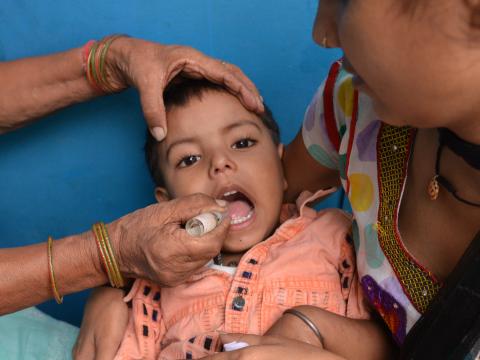How are we beating polio? With magic.

By Frank Conlon, Director CORE Group Polio project
We have never been in such a luxurious position before. In 1988, when the World Health Assembly launched its Global Polio Eradication Initiative, there were 125 countries that had never stopped polio. The world saw 1,000 new cases a day. Fast forward to today and there are just three countries that continue to see new cases: Afghanistan, Pakistan and recently Nigeria saw a small outbreak, but after two years of no cases.
A core group
This is largely the result of the work of the CORE Group Polio project that started 17 years ago with support from USAID and, in recent years, the Bill and Melinda Gates Foundation. We are a large consortium of CORE Group member organisations that work with each other and with local partners all in support of national programmes of polio eradication.
Our lot in life has been to help countries tackle polio in the hardest to reach places. CORE Group Polio Project partners have, for example, been working in the Ethiopia and India for 18 years and in South Sudan, Nigeria, Kenya and Somalia for between two and six years, successfully contributing to national and regional efforts to eradicate polio, improve Acute Flaccid Paralysis (AFP) surveillance and improve immunisation coverage. In addition, the project successfully “graduated” Nepal, Bangladesh, Uganda and most recently, Angola from the programme and the efforts have been transitioned to national governments.
But, as I reflect on our history, I realise this multi-country, multi-partner project would not have been as successful without some of the following characteristics, which are not common to traditional consortia approaches.
Partnership and collaboration
None of us is not working independently. We all work hand in glove with various Ministries of Health and all the players in international public health. We bring the civil society component. That is what led USAID—which has contributed more than $110 million to date—to approach the CORE Group in the first place.
Crucially, our partners include the community members themselves; the community mobilisers who live there and are trusted, are known and are capable of delivering services—even in the hardest to reach areas—they are how we have contributed so significantly to the success of national programmes of polio eradication. They are essential.
One organisation
If you visit any of the countries where this project exists, we tend to be identified and we identify ourselves as working on the CORE Group Polio Project or as CORE Group Polio partners, rather than as staff of the organisations by whom we are employed. We have managed to put aside our organisational egos and this has been critically important in our success. Not only because our host country governments know they can count on CORE Group polio partners as a whole, but also because it has made long-term funding feasible. It has been a joy that we have had long-term donor commitment. USAID said in 1999, “We are in this until the end. YCORE Group member organisations need to bundle your proposals so there is collaboration”.
The magic
However, the magic of the CORE Group model has been how we approached polio eradication differently than most of our organisations would. We have all been involved in other large teams of organisations: alliances, consortia, etc. There is normally a prime grant recipient and subgrantees. In-country the setup is a reflection of that model and the programme officers there complain that their plates are too full and they have nothing that ties everything together.
That is where we have approached things differently. Our secret is establishing a semi-autonomous secretariat in each country where local members work to serve as a shared resource for the partners. This is central and vital. Unlike more traditional models, we do not leave our partners stranded, working in a vacuum. They have the secretariat where the staff there have nothing else to do but polio eradication and helping all our partners to work better.
Making polio history
This intentional, selfless collaboration, supported by a focused secretariat and dedicated community mobilisers working in the hardest to reach places is undoubtedly why, for the very first time, experts say that this year we could see the last case of wild polio virus anywhere in the world.
Listen to Frank’s presentation on this topic and that of Dr Roma Solomon, Director of the CORE Group Polio Project in India here